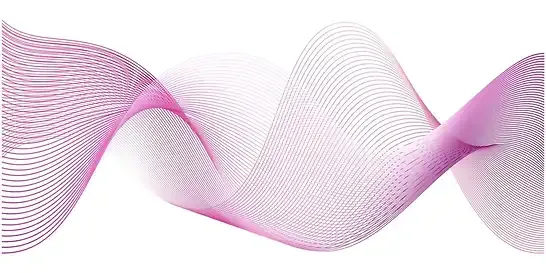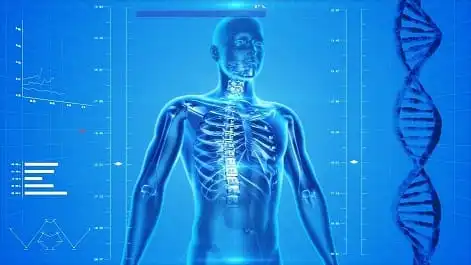AI in Breast Cancer Screening: Improved Detection and Diagnosis
AI in breast cancer screening is modernizing early detection. It can enhance the accuracy, reduce false positives and negatives and also cuts the radiologist workload. Learn how this transformative tech alongwith personalized strategies can improve breast cancer screening patient outcomes globally.

For years Breast cancer remains a daunting health challenge globally. It requires modern and innovative approaches for screening and early detection. No doubt the traditional methods have proven vital but the innate limitations and the Burden of the disease compel a paradigm shift. AI in breast cancer screening is emerging as a transformative force. It promises to enhance diagnostic accuracy to improve patient outcomes on a larger scale.
The Global Imperative: Breast Cancer Burden and the Need for Early Detection
If we analyze globally, then the backdrop of breast cancer presents a compelling case for quick action. Back in 2022, breast cancer disease affected nearly 2.3 million women worldwide. It leads to 670,000 deaths across the world. The projections about this very disease shortly are concerning. By 2050, the new cases are estimated to rise by 38% and 68% in death rates. This mounting Burden is projected to impact the low Human Development Index Countries (HDI). In those countries, access to screening and treatment is already limited. So addressing this growing public health crisis is very important. World Health Organization (WHO) took certain initiatives (Global Breast Cancer Initiative) to reduce the risks of breast cancer mortality by 2.5 percent.
Benefits of Early Breast Cancer Detection
For successful breast cancer management and treatment, early detection serves as a major cornerstone. By identifying the disease at its early stage, one can significantly improve the patient survival rates and treatment as well. For instance, the regular mammographic screenings can largely reduce the risks of mortality from breast cancer.
Moreover, a Swedish company, for example, showed that all those women who religiously adhere to regular mammograms experienced 60% lower breast cancer risks than those who didn't. So, if early detection is conducted then the chances of survival are very high. Over the past decades, many technological advancements in screening breast cancer have contributed to more than half of the decrease in breast cancer deaths.
The proven effectiveness of early detection in contrast to the increase in global burden, implies a major gap in current screening access. The detach between lifesaving impact of early detection and growing global burden leads to the limitation in mounting traditional screening methods. So, the need of the era is not only improving the screening but also making it universally available and equitable. Artificial intelligence, however, with its advanced automation, consistency, and efficiency emerges as not just a mere beneficial enhancement, but as a most indispensable tool to bridge the gaps, especially in the regions with limited resources and shortages. This very role places AI as the most necessary strategy for global health equality in controlling breast cancer.
Traditional Breast Cancer Screening: Efficacy and Inherent Limitations
Efficiency
Mammography is the fixed standard for breast cancer screening. It demonstrates its effectiveness by reducing mortality by 15% to 20%. This is a sort of imaging test that utilizes the low-dose X-ray to visualize;
- Breast tissues
- Tumour detections
- Precancerous abnormalities are very small to be felt.
Moreover, as compared to typical digital mammography (DM), Digital Breast Tomosynthesis (DBT) is an advanced form of mammography. It offers improved cancer detection and lower recall rates. Apart from mammography, several other screening modalities include Breast Magnetic Resonance Imaging (MRI). It is used in conjunction with mammograms for high-risk women, though not applicable for the average-risk people due to the possibility of false positives. Apart from these procedures, clinical breast exams and self-awareness programs also contribute to breast health monitoring.
Limitations
Despite all the proven benefits of traditional screenings, various inherent limitations lead to masking down its full efficacy. Radiologists face a lot of workload pressure when dealing with multiple mammograms. Out of all the results, most of the mammograms tend to be normal which leads to resource-insensitive workflows.
Another limitation is the challenge of distinguishing malignant from benign abnormalities. It tends to be either false positives or false negatives. Despite the adoption of DBT which is very beneficial, leads to introducing new challenges due to the increased capacity of images. It leads to prolonging the times of radiologists.
Furthermore, the screening can also lead to overdiagnosis. They can be the reasons for identifying the cancers that wouldn't cause any symptoms or problems in the whole life of women. Treatment of these cancers leads to overtreatment, which involves unnecessary surgeries leading to unwanted costs and effects.
Key Limitations of Traditional Breast Cancer Screening: A Table Representation
| Limitation Category | Specific Limitation | Description/Impact |
|---|---|---|
| Human Factors | Radiologist Workload | The high volume of images. Double-reading increases pressure. Leading to fatigue and variability. The global shortage of specialists. |
| Diagnostic Accuracy | False Positives | This leads to unnecessary recalls. Additional tests. Significant patient anxiety. |
| False Negatives | Cancer is present but the mammogram seems normal, delaying critical diagnoses and providing a false sense of security. | |
| Patient Impact | Overdiagnosis and Overtreatment | Detection of cancers that would not have caused harm, resulting to unnecessary treatments and side effects. |
Artificial Intelligence: A Paradigm Shift in Breast Cancer Screening
With the emergence of artificial intelligence, every field is growing and innovating like never before. The same is the case with the breast cancer screening field. Deep learning and convolutional Neural Networks (CNNs) appeared as a transformative force in medical imaging. These tools revolutionize the breast cancer detection and diagnosis process.
If we talk about CNNs, then they are exclusively capable of extracting intricate features from mammograms automatically. Unlike traditional computer-aided detections, it's a kind of capability that can help in improving the sensitivity and specificity in the detection of cancer. These deep learning models have shown the aptitude to perform at or even beyond the human level in numerous breast imaging tasks which include;
- Lesion detection
- Image classification
- Risk management
All of these systems due to their superiority have expanded the AI utility beyond assistance. It appears to perform the most integral diagnostic role in breast cancer detection.
Traditional Breast Cancer Screening Models Vs Deep Learning Models: A Comparison
In the 1990s, the traditional computer-aided systems often suffered with large amounts of false positive rates. Which is why their widespread adoption become limited. Initially, they were designed to support radiologists to highlight the doubtful areas.
In contrast, deep learning and CNNs signify the new era of AI which can extract features from images automatically. These systems do not rely on human engineering or some pre-programmed rules. This remarkable capability allows the deep learning models to achieve high-level performance. It means that AI is not just a tool but is capable of independent and high-class analysis and classification.
For example, Google’s AI can easily identify the signs of breast cancer just as a radiologist can do. It is also capable of spotting abnormalities that normal human specialists might not be able to perceive. This qualitative hike sets AI from passive assistant to active diagnostic partner. AI systems are proficient with thousands of de-identified mammograms. They allow them to learn the complex patterns which significantly represent the signs of cancer. Furthermore, AI models can also categorize the mammographic lesions into two categories i.e. Malignant and Benign, and also interpret the images according to BI-RADS categories.
Development of AI Applications across Breast Imaging Modalities
AI applications are being developed and show promise across all the breast imaging modalities which include;
- Digital Mammography
- Digital Breast Tomosynthesis (DBT)
- Ultrasound
- Magnetic Resonance Imaging (MRI)
Digital Mammography
In digital mammography modality, AI systems are trained to help radiologists detect breast cancer more quickly and efficiently. Many researchers claim that AI can detect breast cancer with the accuracy of a radiologist. Artificial intelligence enhances the screening process by automating the abnormalities detection. Abnormalities could be like microcalcifications and some masses which enable early intervention. Moreover, big companies like iCAD are continuously integrating AI technology into breast cancer suits to speed up clinical implementation.
Digital Breast Tomosynthesis (DBT)
While the DBT offers improved cancer detection procedures it also increases the number of images and analysis time. Artificial intelligence on the other hand provides several opportunities to enhance the DBT’s advantages and mitigate the shortcomings. Through this, one can streamline the workflows by reducing the time required for the radiologists to understand images.
Ultrasonography
In ultrasonography, it is very crucial to differentiate the breast masses. It faces false positive problems and other substantial variability. AI on the other hand is very useful for the three main tasks in breast ultrasonography which are as follows;
- Detection
- Differential diagnosis
- Prognostication
So the development of AI systems for ultrasonography can be very useful as compared to mammography.
Magnetic Resonance Imaging (MRI)
For MRI, artificial intelligence shows a significant potential in breast MRI screening. It can effectively triage the mammograms to identify the women at higher risk of occult breast cancer. So it’s highly beneficial for the patients who suffer from negative mammograms.
Navigating the Hurdles: Challenges in AI Integration
Despite a lot of advantages and immense promises, the integration of AI in breast cancer screening also comes with several hurdles.
Technical Challenges
One of the top most technical challenge lies in the quality, diversity and data availability. As we know that the development of vigorous AI models requires large data sets that can cover a wide spectrum of diseases. Apart from diseases, data set also requires images from various devices. The lack of standardization in data sets can lead to the biases in AI models. Thus it can affect the reliability across patient population.
Another major block is algorithm generalizability and sturdiness. The inadequate generalizability of AI algorithms often hinders widespread adoption. This can result in the worse performance of AI models. To stop this, there is a need to collect data sets with a diverse range of breast types, densities, ages, and pathological conditions. All of these factors can help in improving the overall protocols and imaging.
Finally, the interpretability of several AI techniques presents a lot of challenges. With millions of parameters, the outputs often lacks clear explainability. So, for the clinicians to completely trust the effective use of AI, they need to understand how artificial intelligence reaches a prediction, which is the most fundamental step of explainable AI (XAI).
Ethical and Regulatory Considerations
The ongoing issue of algorithmic bias originating from limited data sets poses a threat to health equity. There is a need for proactive and multi-dimensional strategies to diversify the data and make the model development transparent to ensure all the equities for the patients. This is a critical ethical concern as the models are trained on limited data and may misdiagnose or overlook the patients. Furthermore, concerns about data privacy are also at the top. Patients are concerned that their provided data might be used to train AI algorithms or for some research. So the transparent use of patient data is very crucial.
Another important barrier is the lack of regulatory framework precise to AI in breast cancer screening. This gap produces the vagueness and hesitation in adopting AI technologies in clinical practices. So there is an urgent need for a proper AI governance to guide the safe incorporation.
Future Directions in AI-Enhanced Breast Cancer Screening
The route of AI in Breast cancer screening head towards the personalized and sophisticated applications, risk assessments and personalized patient management.
Personalized Strategies and Risk Assessment
AI is composed to transform breast cancer risk assessment. This can be done by integrating large amounts of data points, genetic factors, imaging data, and lifestyle information. AI-powered tools like ProFound AI Risk are doing wonders in terms of accuracy in predicting short-term breast cancer risk. The tool is capable of identifying women at higher risk and possibly guides additional screening. So, the shift from age-based screening to risk-adaptive guidelines will enable clinicians to personalize screening for patients at higher risk.
Ongoing Research and Development
AI in breast cancer screening detection is categorized by non-stop innovations. Researchers and scientists are continuously developing advanced AI models. For instance, Mirai is a breast cancer prediction model. It is validated on over 1.9 million mammograms across 21 countries. It can predict the cancer risk from a single mammogram even before the actual signs appear. This innovative capability allows the identification of high-risk patients who may benefit from quick additional screening.
Evolving Role of Radiologists
As AI systems are becoming more advanced and up-to-date, the radiologist's role is also evolving. From primary image interpreters to top-notch diagnostic consultants, radiologists can now do wonders. AI's role in automating tasks can truly help radiologists manage their workload. It can also help in freeing some enough time for further focus on complex cases. Moreover, this collaborative approach can greatly help in maximizing the approach toward diagnostic accuracy while maintaining the human element.
Conclusion
Artificial intelligence demonstrates a crucial role in the advancement of breast cancer screening. The ever-increasing worldly burden of the disease along with inherent limitations critically underscores the need for modern solutions. AI’s potential to advance cancer detection rates, less false positive and negative rates and optimizing radiologist workload is truly commendable.
The shift from traditional screening system to advanced deep learning models signifies an important change in AI’s role. However this path is not without the challenges. Technical hurdles like data diversity, interpretability and generalized algorithmic problem is paramount. Furthermore, fostering the trust and acceptance among healthcare professionals is the need of the hour for successful clinical adoption.
The future of breast cancer screening lies in the collaborative approach between humans and AI’s experts. This partnership will not only upgrade the diagnostic accuracy but also enable the tailored risk assessments for a more effective global breast cancer care approach. Lastly, continued research and thoughtful implementation will be the key to realize the full potential of AI in breast cancer screening.


